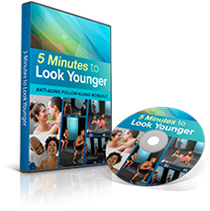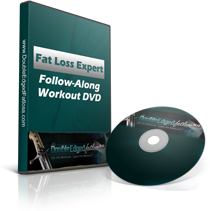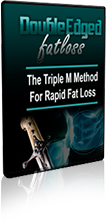Body Science: How To Make
Weight Loss Formulaic

Your body's natural metabolism, or your 'Basal Metabolic Rate' (BMR) is determined by your height, weight, age, gender, lean body mass, and physical activity level.
This means your body naturally burns calories today, whether you exercise or not.
Food and Calories:
It used to be thought all calories were created equally, and by burning 3,500 - 7,000 calories more than you consume per week, you could lose 1-2 pounds. However, people have tried this, ultimately seen their metabolisms plateau, and their weight loss halt as a result.
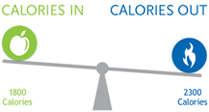
While it is true that 3,500 calories represent one pound, not all calories are created equally. If your goal is to lose weight, you'll want to burn more calories than you consume; conversely, if you want to gain weight, you'll want to consume more than you can burn. The amount of calories you burn is the sum of your BMR + the number of calories spent through exercise.
If it were true that all you had to do in order to lose 1-2 pounds per week was watch the total number of calories you eat vs burn, you would be able to lose 1-2 pounds per week for a year straight, and you'd pretty much disappear. Simply put, this isn't the way it works.
Consider the 'quality' of food you eat. First of all, is it truly food? There are so many 'false foods' out there - masking as 'so-called healthy foods' - that it can be extremely confusing.
For best results, you'll want to emphasize the 'right' types of calories to have the maximum benefit. This is referred to as 'nutrient density.' Nutrient density means some foods provide your body with energy for seconds, others for minutes, and others for hours. By choosing foods that provide your body with ongoing energy levels, and combining nutrient types to maximize your energy level now and later, you'll feel better, look better, and get better results.

I urge you to consider an 'inclusion-based diet,' meaning you choose a select number of real foods (like apples, bananas, eggs, organic chicken, grass fed beef, zucchini, squash, cucumbers, broccoli, grass fed butter, olive oil, coconut oil, etc.) and stick to those foods. Teach your body what it feels like to eat foods that aren't covered in 'false foods' -- like wheat flour, grains, GMO corn (including corn syrup, corn starch, etc.) -- and discover how much better you feel.
You'll quickly notice food comas go away, you feel clean energy after you eat, and your body is amped and ready to move. Movement is the real key to shifting your metabolism, and it all starts by fueling your body with real food.
Age and Physical Activity Level:
Your age and physical activity level help us determine your overall risk for a serious health event, as well as the likelihood you'll get results from an exercise program. Obviously, if you don't exercise, we don't expect you to get results; however, if you're older (i.e. over age 40) and you exercise, we'll certainly need to know more before we can say your body will respond.
While adults over the age of 40 need to choose the proper form, duration, frequency, and intensity of exercise to get a result, every person benefits. If you're 40 years or older, you'll want to take a close look at what you're calling "exercise" before you judge how your body is responding or expect to see any result in the mirror.
As we age, our metabolisms get slower, and our bodies become less forgiving. There are certain key steps we can take to restore our body's slack, and forgiveness, and reverse the physiological aging process, at any age. We will be discussing them in further detail below, so please keep reading.
If you'd like a free anti-aging DVD, please click the link below:

Typically, before age 40, we can make all kinds of mistakes in our exercise program, and so long as we are active, we see a result in the mirror and feel the reinforcement to exercise. However, this doesn't mean we are being effective or efficient. That's an important differentiator.
If you are younger than 40, you'll want to seriously consider setting up lifelong habits that will benefit you later, help you get in your best shape now (while it's still easier,) and prevent long-term health risks.
If you'd like a free fat loss DVD that incorporates whole body balance, please click the link below:


You are designed to be lean, powerful, and capable. By understanding more about how you were designed, and for what you were designed, you can take advantage of the benefits of today's world and also have great health.
By understanding your past, we can make adjustments to your training program and help you work on the most important thing first. This is referred to as 'Body Sequencing,' which is basically a fancy way of saying your body is designed to cater to its highest priority, first.
As an example, joint pain is a higher priority than fat loss. By fixing joint pain before working on fat loss, your body becomes prepared to add muscle, adjust your metabolism, and shed fat.

The same is true with old injuries, especially if they are still causing discomfort or a lack of range of motion. Once you establish 'normal,' your brain will signal stronger muscle contractions and ultimately produce a better muscle contraction. The effect of this on a rep to rep basis is substantial. Imagine how much difference it makes over the course of several sets, workouts, days, weeks, months, and years.
7 Reasons You Might Be Storing Fat:
Either you're working against your body, or with your body. Body fat is a sign your body isn't at optimal health. More important than body fat percentage, however, is why your body is storing fat. Here are some common examples of reasons people store fat:
Physical Inactivity -- our bodies are designed to move slowly, quickly, and at sprint speeds. In nature, this is what gives us the ability to hunt, gather, and build shelter. In today's world, our "work" is much different than it used to be, and finding food no longer requires extreme effort.
Evolution has its advantages, in that technology has provided shelter, work, prosperity, safety, and a shift from brute strength to focused brain power. By advancing as a human species, we have extended human lifespan, increased quality of life, and simultaneously introduced many new diseases. Amongst them is obesity, which is perhaps the most dangerous of all.
Biologically speaking, we haven't evolved much from the time when we needed to hunt in order to eat. In the absence of "normal" amounts of movement, our bodies decide it's winter time, pile on fat to protect us from the cold, and deposit it in our lower abdomens to quickly access during the winter when food is hard to find.
When we are not active, storing fat is a survival strategy, so we must simulate hunting and gathering if we don't want our bodies to pile on belly fat.
"Fake" Food -- fruit, veggies, meats, naturally-occurring oils & fats, and limited amounts of grains and legumes constitute a "normal human diet." Instead of considering which foods to eliminate, it's much more sensible to consider which foods to include in your diet. This is referred to as an 'Inclusion-Based Diet,' and it's the way 'all' other animals on Earth eat.
When we eat processed foods, genetically modified foods, and 'so-called' health foods that aren't really food at all, our bodies don't know how to process them. Instead of excreting these foods, we store them as toxic body fat. Eliminate 'fake food' and your body will become lean and your health will improve so rapidly I suspect you'll be surprised.
Medication (including supplements and over-the-counter drugs) -- while medication can be life-saving, and certainly quality-of-life saving, there are consequences to taking it. In fact, 3 or more medications leads to an increased risk of falls. Yet, even one medication will put strain on your liver, shift priority to it, and reduce the priority on losing body fat.
Storing fat becomes a side effect of body sequencing, because your body no longer sees being lean as important while an important organ is under stress. On the other hand, if you need a medication, you can pair it with exercise, increase absorption, and work with your doctor to reduce your dosage over time. Thereby, you'll reduce your side effects, the strain on your liver -- i.e. your filtration system -- and allow your body to concentrate on lower priority issues, like body fat.
As you can see, there are seven areas that affect your metabolism, above all else.
If we only focus on losing weight, or body fat, we will be ignoring the root issue causing weight gain. Instead, focus on solving each of the seven areas above and watch your metabolism ignite.

A properly balanced workout program includes the following goals:
Strength -- muscular strength training primarily focuses on heavier weights, muscle pairs/groups, rest breaks between 2-5 minutes between sets, and 3-5 sets for best results. Repetition and diligence are key; diet is the most important and difficult aspect of building muscle.
Endurance -- muscular endurance and cardiovascular endurance both develop through the following two types of training:
Steady State Heart Rate Training: By choosing a heart rate (i.e. 75% age-predicted heart rate max) and maintaining within 5% for an entire workout, you are learning to withstand a predictable demand on your heart.
In order to maintain your heart rate, you may have to decrease your intensity. This is a great way to build cardiovascular endurance while learning your fatigue points and how stressful they can be for your heart if you don't make adjustments.
High Intensity Interval Training (HIIT): By alternating between higher and lower intensities (9/10 for 10 seconds and resting or 1/10 for 50 seconds), you will increase the fat-burning effect of your workouts and simultaneously improve cardiovascular health.
It's important not to interval train more than every other day; also, be sure to limit your workout to 20 minutes post warm-up.
Flexibility/Range of Motion/Tissue Mobility -- it's not only how strong you are, but also how 'long.' By improving range of motion, you will be able to produce more torque, divide force, and better attenuate stress; in short, you'll be stronger, have more endurance, and be more capable.
- 'Flexibility' refers to your ability to passively lengthen a muscle, or "stretch and hold."It's particularly effective for beginners who are learning to feel their muscles, to prepare a muscle for an exercise after warming up, or to balance out an asymmetry.
- 'Mobility' is when you actively lengthen and shorten a muscle, like a lunge for the quad and hamstring muscles. This is the best way to improve range of motion when you don't have a restriction inside your joint or any knots in your muscles. Mobility training prepares you to move, and it's a key part of warm-up before working out.
- 'Tissue release' is about finding knots in muscles and releasing them, so you can improve in the other two categories by getting rid of imperceptible pain signals; these sub-sensory pain signals are being sent to your brain with orders to shut down muscles and rest them unnecessarily.
Muscle Balancing -- muscle balancing is done by taking a look at your body front-to-back, left-to-right, and all around. Get a 3D image of your body in your mind, assess your posture, and figure out if one side is tighter, weaker, or somehow placing an unequal strain on your body.
Correct your position and posture until you are fully balanced, and then make sure to balance strength to power, strength to endurance, and agility with reaction-time training.

Balance your energy systems, being sure to jump, sprint, and also exercise for endurance. A balanced body is a fully symmetrical one, inside and out.
When focusing on muscle balancing, you are working on the 'art' of your body and taking a look at all aspects of training to find the 'weak' spot.
Power -- power is simply defined as force x distance. In other words, how quickly can you get from point A to point B, and at what resistance can you maintain your speed?
When you're working on power, you're working on slowly loading into a position (the 'negative' of a rep) and then exploding (the 'concentric' portion of a rep).
Try doing sets of 2-4 and sets of 8-12. For the 2-4 rep sets, you'll be using a heavy weight that you can lift safely and quickly (i.e. 70% of your one rep max); for the 8-12, you'l be using a much lighter weight (i.e. 30% of your one rep max).
Agility -- this is your ability to quickly change direction and speed of direction. Tennis is a great example of an agility-based sport, but there are many other ways to work on agility. A personal favorite for me is while treading water in a pool or the ocean, and then changing which direction I sprint swim left or right, or at any diagonal around me. It's even better when someone else can call it out for me. A couple of strokes, and then setup again. I always suggest doing 10 second reps for agility training, and resting 50 seconds to 3 minutes.
Fat Loss -- alternate high and low intensity, recruit as many muscles as possible, and move in every direction. These are three of the most important rules of fat loss. For a detailed explanation on what creates the fastest fat loss, please click the link below and you'll be taken to the Triple M Method for Rapid Fat Loss (TM) (perhaps our most popular video of all time; in fact, it's been viewed over 8 million times!):
Sports-Specific Training (and/or Sport) -- there is no greater form of exercise than play. By playing, and competing, we are able to distract ourselves from the intensity of training and get better results. Plus, it passes time quickly, improves social life, and is fun.
Play wins.
There is no better form of exercise than exercise based upon having fun. Every other form of exercise 'costs' your body in some degree of stress or dissatisfaction, as it requires a lot of effort. When you feel you are playing, you smile and release endorphins, you'll notice you can maintain higher intensities for longer durations, and you recover more quickly.
This is a powerful combination, and exactly the benefit of playing sports. It's not important you join an expensive league, feel you're really good at a sport, or even have a competitive nature. What's important is having fun; truly loving the time you're spending playing a sport, and being active the whole time. The stress relief benefit, alone, is worth the time spent.
Hitting Goals: Periodization-Based Training
Understanding that a balanced exercise program means working on all eight goals, it's wise to rotate between them, choosing one goal to focus on every six weeks. Ideally, stack them together in sets of three, with complementary goals. A great way to think about this is as follows:
- Phase I: weeks 0-6 -- Goal #1: "Pre-competition" (choose a goal that preps you for the next phase, like muscular strength preps fat loss by increasing your metabolism.)
- Phase II: weeks 7-12 -- Goal #2: "Competition" (choose your main goal and work on it during these six weeks for maximal benefit)
- Phase III: weeks 13-8 -- Goal #3: "Post-Competition/Recovery" (choose a logical workout goal, like muscle balancing, that will help your body recover and prepare for the next intense 12 weeks to come.)
This method of 'stacking' phases together in groups of three is referred to as "periodization training" and comes from the world of athletics. By training athletes with this format, we are able to reduce rate of injury and optimize performance for the season of play.
In our case, we're taking a method used for athletes - that has been studied extensively and well documented - and applying it to your specific goals. Your results will show it.
For more information on Periodization Training and how it applies to fat loss, strength, or any other goal you might have, please click play to begin watching the video below:
Exercise & Stress: The 'Quality' Of Your Exercise Experience

Perhaps the number one most under-rated factor that determines long-term exercise success is whether or not you like the type of exercise you're doing. As humans, we are designed to move, and it feels great. In order to find a form of exercise that works for you, it's important you experiment.
The purpose is creating an oxygen deficit (EPOC) that requires your body to work hard to restore balance. This "work" equals calories spent, and so your body loses weight. In specific, when training at high speeds and alternating with rest breaks, you'll naturally bias the consumption of sugars and carbohydrates for energy, so this type of training can be helpful with dietary mistakes, or to melt away fat on no-cheat days.
For example, you can interval train any of the following types of workouts, but most people only ever consider running on a treadmill:
- Swimming
- Running
- Jogging
- Walking
- Bear Crawling (on all 4's, hands and feet)
- Crab Walking
- Resistance Training (i.e. doing a lot of reps with a lower weight and/or combining exercises into supersets and giant sets)
- Rowing
- Rollerblading
- Skateboarding
- Wrestling/Fighting

And the list goes on... you see, "HIIT: high intensity interval training" is a method of alternating higher and lower intensities for both a fat-burning effect, as well as increased cardiovascular endurance response; all in 20 minutes or less. HIIT has been well-documented to shortcut workouts and reap as much or more cardiovascular benefit as 2 hours of moderate intensity cardio.
HIIT doesn't apply to just one form of exercise; rather, it applies to all of them.
Make sure to try different forms of exercise, find something you like, and then apply the lessons you're learning today. You can "resistance-train" on the water while rowing, so long as you row harder or softer, faster or slower, and take appropriate rest breaks. You can bias rowing towards more legs or more arms, more back, or more forearms.
The way an exercise looks is not necessarily the way it feels. Every time you contract a muscle -- except your true core, diaphragm, intestines, and heart -- you have a choice. You are purposely recruiting a muscle, and you can choose a stronger or weaker contraction from larger or smaller muscle groups depending upon what you want to recruit.
On the other hand, if you watch someone else do a workout and simply imitate what they've done, without knowing which muscles you want to recruit, you could place yourself at risk. Plus, you'll probably have a completely different exercise experience.
Take some time and figure your favorite forms of exercise, alternate between them every 6 weeks, and work on different goals when you do, from strength to agility, fat loss, or muscle balancing. Control your outcome by choosing your goal before you begin exercising, and making the appropriate modifications.
Whatever you do, don't let exercise be stressful. This is a very common mistake I see in the gym, or with other trainer's clients, complete respect intended. Some people view a gym workout as stressful, either because of the audience watching, or because of the desire to perform in front of others that many people commonly feel.
One way or another, exercise can be stressful. If that's the case, attempt to correct this with laughter, with a workout buddy, with music that helps you hone in, or through a different form of exercise that is a better match to your personality. Learn the "rules" of working out for your specific goals, then apply them somewhere else. That's a much better use of a personal trainer, if you don't like your workouts.


The 'type' of exercise you do has a dramatic effect on your results; and whether you get results, period. You see, if you choose 'cardio' because you want to lose weight, you're fighting an uphill battle. Cardio was designed to maximize use of the energy system in your body dedicated to spending the least amount of energy possible.
By prioritizing use of an energy system that slowly burns calories you are able to sustain activity for much longer, as is needed in a long walk, run, bike ride, swim, etc. The opposite is also true; when you sprint, you are prioritizing an energy system that rapidly burns calories in an effort to use short-burst energy sources (i.e. sugars) as rocket fuel for quicker movement. Naturally, a short-burst movement isn't a sustainable one, and sugar doesn't work as a sustainable energy source. Hence, they are well paired.

Workout Partners:
Working out with a partner can be a wonderful experience. Having said this, you don't need a partner to get results. A great workout partner will help you get the extra 10-30% from every set you may not get on your own.
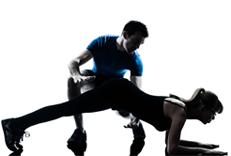
Working out with a buddy can be detrimental or beneficial, depending on who your buddy is and how you pair together. For example, if you spot each other correctly, push one another to hit a new personal best repeatedly, and hold each other accountable, you've got a great buddy; on the other hand, if you like to chat and distract one another, if you have a buddy who shows up late or misses workouts, or someone who doesn't share the same goal you have, then you should re-consider.
Nonetheless, even the best workout partner means you have to schedule exercise, which may not be the easiest way for you to squeeze in workouts. Personally, I like to do 5 minute bodyweight (or kettlebell) workouts as a main focus of my workouts, utilizing the concept of Minimum Effective Dose (MED) Training. Then, I hone in on outdoor activity and am able to be more active, overall, with this approach.
Unfortunately, my current training approach is not conducive to having a workout partner, so I don't have a workout buddy at the moment. Instead, I make it a point to push myself when I want to quit, and "hear" my friend's voice in my head. I complement this with music that pumps me up, and chalk up the difference in workout effect to lifestyle benefit.

So, the choice is yours... what's more important is realizing the choice you're making, and how it will affect your results. For many people, partner accountability is everything. For me, it becomes the center point of my day, and then I choose other activities differently. When my schedule is more free, I choose to be active as much as possible all day long.
Exercise Location: Working Out At Home, In A Gym, Or While Traveling
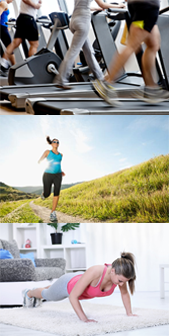
Exercise location can drastically change the type of workout program I'd suggest you use. If you exercise in a gym, for example, it would make sense to incorporate weights, at least some of the time. If the only piece of equipment you have is a treadmill, we'd focus on intervals, or get you off the treadmill completely. If you're exercising at home or on-the-go, bodyweight workouts can be amazing.
In fact, bodyweight workouts are underestimated in what they can accomplish. Bodyweight workouts, alone, should be able to help you get under 10% body fat, add at least 15 pounds of muscle to an average build, and build tons of athleticism.
The key is to modify intensity, rest breaks, types of exercises, how and when you stack them together, and periodization for goals. When you adjust these factors, your body will be able to serve as a dynamic and intense base for resistance against nearly every muscle in your body.
Of course, adding weights makes things easier, and sometimes more fun. Personally, I enjoy using kettlebells, medicine balls, and dumbbells when I work out. These forms of weight can be very dynamic due to shape, size, weight distribution, and the angle you turn/use them. By making my workouts as dynamic as possible, I'm able to create mini-movements in every joint in my body.
These "mini-movements" serve to create co-contraction, or to recruit all muscles surrounding a joint. Meanwhile, they re-teach position sense and improve coordination. Whenever training with resistance, it's always a good idea to add surface variability.
Resistance Training: Building Muscle, Increasing Metabolism, & Supporting Joints
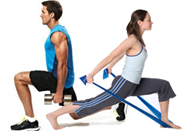
Resistance training helps build muscle, increase metabolism, and support joints. By resistance training, you are using your body in a different way than cardio, and building heart strength, rather than heart endurance. It's important to build both heart strength and heart endurance.
If you're already resistance training, here are a few tips to improve your results:
- Check your rest breaks. Most people don't rest enough. You should be taking at least 2 minutes and up to 5 minutes after a properly designed set.
- Consider giant sets (3+ exercises) and supersets (2 exercises, back-to-back) in your training program.
- Move in every direction (3D exercise). By choosing exercises that move forward-backward, side-to-side, and with rotation, you'll be hitting all of your muscle fibers and moving your body in a way that maintains and creates athleticism.
Train at 3 speeds:
- Superslow (10 seconds concentric, 10 seconds eccentric)
- Normal (2 seconds concentric, 1 second isometric, 4 seconds eccentric)
- Sprint (as fast as you can safely move through an exercise)
- Choose compound movements, most of the time. By choosing exercises that involve 2 more more joints (ideally more!) at the same time, you'll be increasing the metabolic effect of every exercise you do.
- Never forget muscle balancing. A balanced body is an injury-free body, and that's the real key to shifting your metabolism on a more permanent basis. Anytime a more serious issue is taking place, your body will shift priorities to that system (i.e. joint pain, digestive disorder, Diabetes, liver disease, etc.) and it will be harder to get the results you want from exercise.
Cardio: When Properly 'Categorized,' Cardio Can Be Great (But NOT For Fat Loss)

Cardio is a great form of exercise, but not for fat loss. Resistance training and interval training are much better when it comes to fat loss, muscle building, training for sport, etc. Cardio is a terrific form of exercise for stress relief, lung volume training, steady state heart rate training (important for endurance) and joint mobility.
When doing cardio, consider one of the goals listed above as your main purpose. If these goals don't match yours, perhaps you're better off choosing another form of exercise, such as resistance training, flexibility training, etc...
After choosing your goal, be sure to select the best form of cardio to help you get there. For example, if you want to build upper body endurance, rowing may be a much better choice than walking.
Next, choose how long you want to be able to perform an activity. Let's say your main goal is to increase endurance while walking, hiking, or biking. Well, we'll divide your workouts into all three, and we'll add a day of sprinting to make sure you train all speeds and stay balanced.
During our workouts, we'll focus on steady-state heart rate training (SSHRT), so we'll commit to a percentage of your heart rate max (say, 60%) and stay within 5% of this the entire workout. This means you may need to slow down or speed up at various times, and wearing a heart rate monitor will be very helpful.
If you'd like help calculating a percentage of your heart rate max, please use the tool below:

Stretching - Length: The Misunderstood Type Of Exercise That Doubles Results
When it comes to "stretching," the most common mistake made is choosing the wrong 'type' of stretching (i.e. choosing flexibility instead of mobility or tissue release). Here's a basic set of rules to help you decide:

- If you want to be able to stretch and hold a position, choose flexibility.
- If you wand to be able to move through a greater range of motion, choose mobility.
- If you want to get rid of knots or tight spots, choose tissue release.
When you combine these three, you build symmetry, and then gain range of motion in the form most relevant and useful to you. If you'd like more help with stretching and think follow-along workouts would be useful for you, please click the link below:
Get Rid of Knots, Tightness, & Feeling
Achy -- RESTORE Your Body
Exercise Frequency:
Most people exercise too often, and for too long. At least for their goals:



Warm-Up:
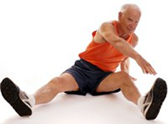
Warm-up is defined as the point at which you break a sweat. This means your core temperature has been elevated, so you are ready and primed for exercise. By walking a bit faster to your workout, staying a bit more active throughout your day, and making sure to test every range of motion slowly before you do so quickly, you can chop time off your warm-up.
Always listen to your body and remember you're warming up whether you want to or not. No reason to waste your workout on warm up and put your body at risk at the same time. If your body wants you to heat up muscle tissue and deliver blood to your extremities first, there's no getting around this; there's only 'safe' and 'unsafe.'
Think Your Way Fit: Brain Exercise For Your Body
Sports psychology is the area of health and fitness dedicated to studying the mind's effect on the body, as it relates to physical performance. At its core, there are 2 areas of the brain that create movement:
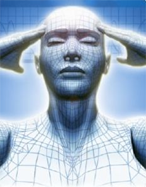
If you've ever watched an Olympic interview with an Olympic champion, you'll recall them speaking about visualization. This exercise is beginning to show valid medical documentation in the literature, but it's a lesson passed from athlete-to-athlete and coach-to-athlete across all sports at the highest level.
Visualize a movement before doing it, process how you'll move, what can happen if you're off balance, and how it will feel when you're balanced and strong. Then, execute.
The more often you plan a movement, the more you are building strength of the signal originating from your pre-motor area. This signal will help you build more contractile strength when your motor area is activated.
In fact, it's estimated that up to 30% more contractile strength exists with proper recruitment of your pre-motor area. That's an enormous difference, when you consider the exponential effect that will take place during every rep, of every set, of every exercise, of every workout you do.

So, you have a choice. Will you plan out movement with great accuracy intended, such as aiming before you throw a dart, shoot a gun, or bowl? Or will you simply toss a stone into the lake and see if it skips?
See a movement in your mind's eye and get that much stronger.
Improve exercise focus and improve your body's potential.

Learn the "rules" of resistance training and 95% of hitting any exercise goal becomes formulaic; the rest is learning how to customize recommendations for your body, in specific, which makes all the difference.
Let's first discuss different workout goals and how to modify sets, reps, and rest periods:
*Max 5 days/week
*Max every other day
8-12 reps (light)
*Max every other day
2+ reps - 12 (based upon ability, exercise, and your types of muscle fibers)
*Max 3x/week
*Max 2x/week
*NOTE: 50/10 denotes 50 seconds of work (high intensity) and 10 seconds of rest (low intensity.) This is used for interval training, so basically an exercise or group of exercises are chosen, and each exercise is performed for 50 seconds of work and 10 seconds of rest. In the case of 40/20, it's 40 seconds of work and 20 seconds of rest, and so on.
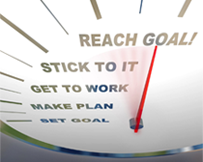
As you can see, your exercise goal greatly affects the design of your workout, how much time you spend resting, how long you workout, how often you workout, and the exercises you'll choose based upon your goals and availability. Understanding to rest another minute, for example, can save an injury, spike your metabolism, and build more muscle. In order to get great results, you need to start with great program design.
Laser-Focused Results: Exercise Program Customization

Next, is customization. Program customization comes down to your shape, size, age, gender, exercise experience, etc. Once you understand your own body, you'll be able to look at any great program, adapt it for your needs in specific, and get amazing results. This is when the search for the "perfect diet or weight loss program" will end.
The last 5%, but the most important 5%, is personalization. Here are some important questions to ask yourself, in order to better understand if you'll benefit from personalization:
- Do you currently have any pain, digestive disorder, blood sugar disorder/disease, or any other higher priority health issue than losing weight?
- Are you currently taking more than two medications?
- Have you tried to lose weight at least twice without success? (including rebound weight gain)
- Do you have trouble building muscle?
- Do you have 'fat deposits' on your love handles, thighs, lower abdomen, or lower calves/ankles?
- Do you get at least 7 hours of uninterrupted sleep per night, every single night of the week? (with a very rare exception)
Do What It Takes: Do You Have Enough Intensity To Succeed?
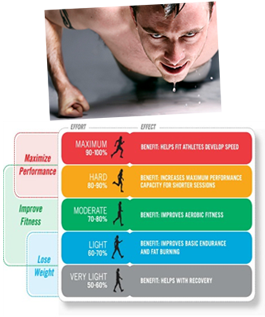
Workout intensity is a common cause of plateau or stalled results. It could be you're doing everything else right, but you're missing the extra 'umph' it takes to get results. If you're not experiencing "momentary muscular failure" (MMF) on the last rep of every exercise you do, you're not doing a single exercise properly, respect intended.
MMF is the key to your results. When your muscle exhausts to the point of last-good-rep, you are signaling growth to your body and brain. A rush of nutrients help your muscle as it fills with new blood, oxygen, and begins the repair process of micro-tears that take place at this golden moment. The repair process may last for 2-3 days, and is otherwise known as EPOC, or exercise post-oxygen consumption.
The soreness you experience is likely a combination of lactic acid deposits -- which happen when you hit a fatigue point and deplete your anaerobic energy system -- and the micro-muscle tears mentioned above. Of course, getting rid of soreness costs energy, in the form of calories, so that's how we burn fat and force metabolic growth. Generally speaking, a 5-7 out of 10 soreness level is appropriate for 1-2 days after a challenging workout, but not longer.
If you're getting sore for longer, or too sore, please adjust your intensity, rest periods, and hydration levels. Be especially conscientious with electrolyte balance by consuming fruits, vegetables, and plenty of water.
In closing, there is a 'science' behind working out for best results, and it's pinpoint, well documented, and proven. Exercise science is constantly improving, and there are mega million dollar budgets determined to push it further due to athletes and the revenue derived through entertainment.
As we learn, we advance as a human species. Together, we apply the very same principles as athletes, but for different goals, and we all reach our potential.
Share what you learn. Learn based upon what you do.
Personalize your exercise journey.
Win.
